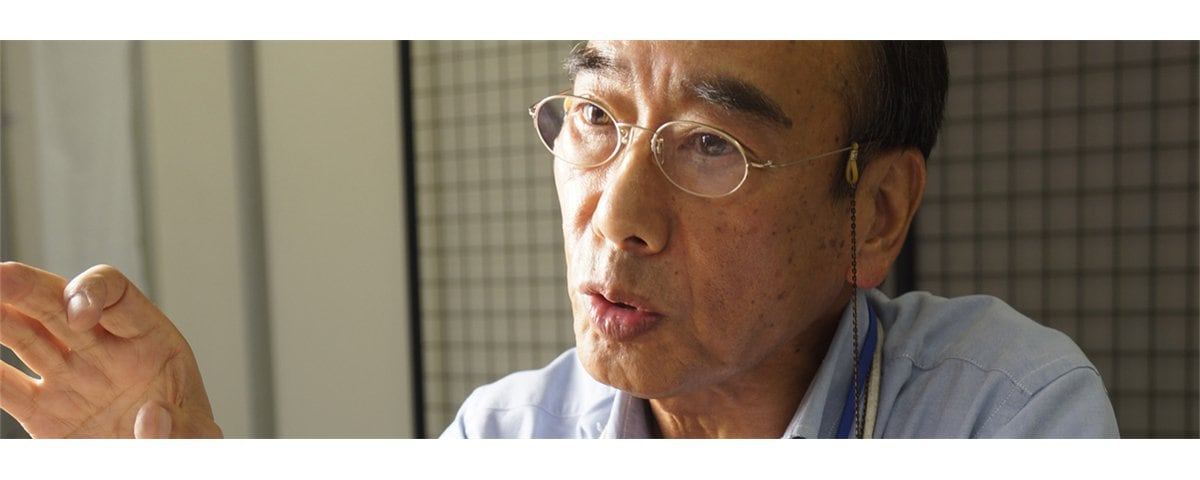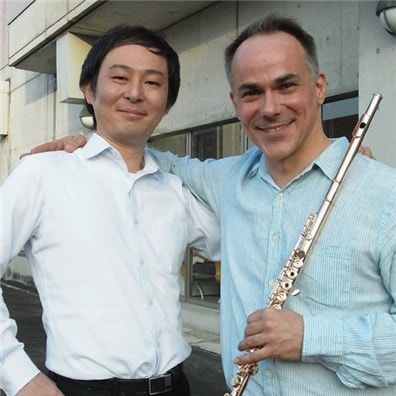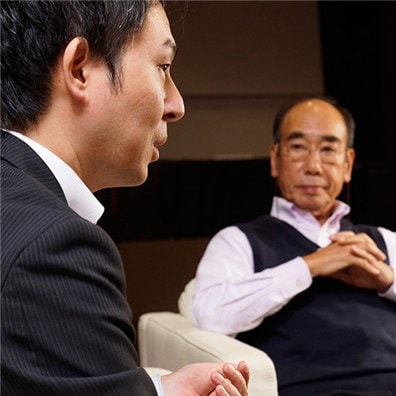Part 2: A former Yamaha technician looks back the history of Yamaha flute.
Yamaha Flute "Artist meets Yamaha Artisan"
Yoshiyasu Hara × Artists
Hara - Both Mr. Rampal and Mr. Nicolet asked us, "Please stay as you are. Yamaha shouldn't offer an easy-to-play flute."
― Mr. Hara, you have been engaged in flute development and artist relations with both domestic and international flutists as an advisor even after retiring from Yamaha in 2003. You studied flute performance at Tokyo College of Music before joining Yamaha, is that correct?
HARA – Yes, I studied flute with Mr. Masaru Kawasaki in my first year, and with Mr. Yasukazu Uemura after my second year. As I failed mathematics and German, it took me five years to graduate.
― Did you join Yamaha right after graduation?
HARA – Yes. I got a call from Mr. Kawasaki in my senior year, and he asked me if I wanted to work at Yamaha as Yamaha was building a new factory (Toyooka factory) at that moment. But I missed that opportunity as I couldn’t graduate that year, so my plan was to become a music teacher in junior high school.
However, I received a call from Mr. Kawasaki again in my fifth year, and he told me that Yamaha was developing a high-end flute model and needed more staff in order to work well with artists, and he asked me if I was interested. I thought it was a great opportunity to see the world for myself. In 1971, I finally joined Yamaha after receiving practical training at a factory in the summer of my fifth year in college and passing job interviews.
― What was your first job?
HARA – At first, I studied flute manufacturing process in production field. There were three seniors who were assigned to flute development, and since it was right before the launch of the handmade model, five people were selected from the production field for manufacturing the new model, and I was one of them. Normally those who were engaged in flute development didn’t have to learn flute manufacturing in the production field, but we were asked to do so since it was helpful for manufacturing the high-end model. In fact, all my basis came from the experience from that period, and I really appreciate that opportunity.
In my second year, I was assigned to the flute development section. By that time, development of the body of the handmade model had already been finished, so I became responsible for developing head joints. Having said that, what we actually did was make a lot of prototypes, asked several flutist to try them, and wrote down blueprints of those prototypes. We kept doing this over and over.
Blessed encounter with Mr. Rampal
― And shortly afterwards you met Mr. Rampal.
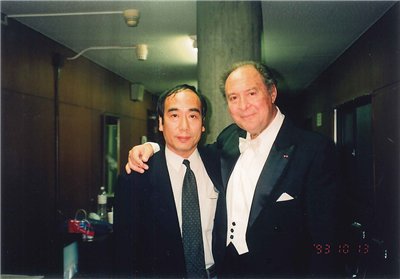
HARA – Mr. Rampal held a recital in Hamamatsu in the autumn of my first year. I thought it was a good opportunity and visited him with a prototype flute. Even though I had made an appointment through his manager, I was foolhardy. When he appeared at the interval, I asked him “If you don’t mind, would you try this flute?” he played the instrument on the spot and asked me “may I borrow this?”, and disappeared. Surprisingly he played the flute in the later part of his recital! You can’t imagine how excited I was, and that experience really impressed me.
Afterward, he told me “Those Japanese flutes I have tried are all easy to play but not unique at all and didn’t impress me. However, Yamaha is different. The embouchure hole is not too wide and provides good air resistance, and it is an instrument that allows the player to decide what the music sounds like. Therefore, I played.” That was the beginning of the relationship with Mr. Rampal.
However, I just wasn’t happy at what occurred. When I listened to his performance from the audience, it was clear that there were some differences between our instrument and his own instrument. The flute he played on that day was a gold flute of Wm. S. Haynes. His Haynes flute had clear and colorful sound from the lower range to the higher range, while our flute seemed to have restricted dynamics and musical range. After his recital, I expressed my gratitude to him, but he said, “I did that for myself.” He handed his Louis Lot 18k gold flute and Haynes 14k gold flute to me and said, “You can take a look and play my flutes if you would like.”
This Louis Lot flute is said to be the only gold flute made by Louis Lot. Almost by chance, Mr. Rampal’s father, Mr. Joseph Rampal acquired the instrument from an antiques dealer in Paris. Although it was in pieces when he found it, there wasn’t even one piece missing when he assembled it. It was handed over to Mr. Rampal and he began playing it. That was the reason why he was known as “The Man With the Golden Flute”. Not only was he playing a gold flute but he was playing the only gold flute made by Louis Lot.
The other 14k gold flute Mr. Rampal played was the one which he asked Mr. William S. Haynes to make referring to the Lot flute. Normally, Haynes gold flutes use 440-450 grams of gold, his gold flute only used 400 grams and it was very light. It was made lighter especially to imitate the Lot gold flute. If we listen carefully, it seems that all his recordings in the 60s were recorded with the Lot 18k gold flute, and those recordings in the late 60s and 70s were recorded with the Haynes 14k gold flute. You can tell the difference when listening to them carefully.
― And you were asked to repair the only Lot gold flute.
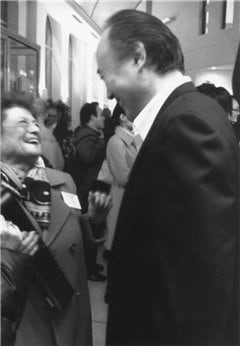
HARA – Two years later, when Mr. Rampal visited Japan again, his manager called me and said, “Please come to Tokyo right now.” He told me that Mr. Rampal had dropped his Lot 18k gold flute and needed to repair it. I rushed to the Imperial Hotel in Tokyo where Mr. Rampal was staying and checked the instrument, and I found out that the welding joint of the body made of a winding pipe was cracked and jagged. I asked him how long did I have to repair it, and he said he would stay in Japan only for a week. I told him that I wasn’t sure if I could repair it completely but I would try my best, and I brought it back to Hamamatsu.
The biggest problem was if I could find the same material as the instrument. The fluorescence analysis indicated that it was made of 18k gold. However, Yamaha had never made any gold flute at that point, and those technicians who were in charge of making prototypes said it would be difficult to obtain the material and repair. After due consideration, I went to a dental clinic and obtained a sheet of 18k gold. It took me two days to make it same thickness as the Lot flute by hammering and thinning by a roller. A week later, I finished the repair somehow and brought it back to Mr. Rampal, and he was delighted with his instrument.
― Ever since that incident, Mr. Rampal asked you to adjust his instruments every time he visited Japan.
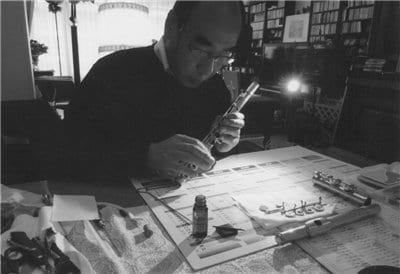
HARA – Yes, almost every time. I think I did it more than ten times either by visiting recital halls or by receiving his instruments. I guess I gained his trust by repairing the Lot flute.
The, Louis Lot flute had a slightly lower pitch. It had a longer body and intervals between tone holes were wider than usual; therefore, the actuarial calculation showed that it was supposed to have A435 Hz. The old Haynes flute Mr. Rampal was playing also had a design which was supposed to produce slightly lower pitch (A438 Hz), but it was sold as a flute which had A440 Hz. As he kept playing those instruments, he used to say, “I have been playing these flutes for so long and now we are one in body and soul. Even if something doesn’t go well, that should be my problem, not the instruments’.” Although he also had a Haynes flute which had A442 Hz pitch, he only played it when he was playing in Vienna and other areas where the pitch standard is a bit higher, or in the case of emergency such as when he had to leave the instruments for repairing. The other unforgettable memory is that he said, “It took me eight years to make this Haynes truly mine. Nowadays those young people choose instruments which they can handle easily. However, that makes everyone sound same. The sound is something you can obtain after unflagging effort and struggle.”
The relationship brought by a Yamaha silver flute
― The encounter with Mr. Rampal later led to the encounter with Mr. András Adorján and Mr. Shigenori Kudo.
HARA – The beginning was the Yamaha silver flute which Mr. Rampal unexpectedly played at the recital in Hamamatsu. The second time I met him, he told me that he liked the silver flute he played and wanted to take it. He played it at the International Summer Academy of Nice and at his lessons at Conservatoire de Paris. Mr. Adorján had a chance to play the Yamaha silver flute in Nice. He liked it and immediately ordered the same flute. That was when he was still in The North West German Philharmonic. After that, we carried out many trials with Mr. Adorján. He wanted a flute which had a wider dynamic range, and since then we have worked together taking his advice which was a different direction from Mr. Rampal’s.
There is another story regarding the Yamaha silver flute which Mr. Rampal brought back. One day when we were traveling around Europe with our prototypes, we were invited to Mr. Rampal’s house. It was an old apartment on Mozart St. in a prestigious residential area. When we visited him, he asked us, “One of my student, Mr. Kudo is a Japanese flutist who will soon become renowned around the world. I will let him participate in the next Paris International Flute Competition. May I let him play the Yamaha flute I’m borrowing in the competition?” Although I didn’t know about Mr. Kudo at that moment, I accepted his suggestion. As a result, Mr. Kudo won the first prize in the Paris International Flute Competition, and later won the third prize (without the first prize) in the International Music Competition in Munich.
The first time I met Mr. Kudo was when he had a triumphant return recital in Tokyo Bunka Kaikan in 1978. He also played Mr. Rampal’s Yamaha silver flute at the recital, but my first impression was that young Mr. Kudo was so energetic that the flute wasn’t able to fully project his musical demands. Therefore, when I met him for the first time after the recital, I honestly told him my impression and suggested, “I’m sure that I’ll be able to make an instrument more suitable for you. Would you play it?” and he said, “Yes, I’m willing to.”
After that, we started making various prototypes and asked Mr. Kudo to try an instrument which we thought might be the one, and consequently he won the first prize and president award at Jean-Pierre Rampal Flute Competition in 1980. As a result, he attained fame across the world.
Mr. Kudo is an impatient and efficient person. He drives very fast in the city of Paris. Similarly, he doesn’t get satisfied with an instrument if he can’t obtain the sound he wants within a few months. He is probably trying to test us and make sure we are serious enough. Even if we give our best efforts to meet his demands, he watches over us even if it takes a long time and even if we fail. Thus it was almost a year later when we finally earned his trust.
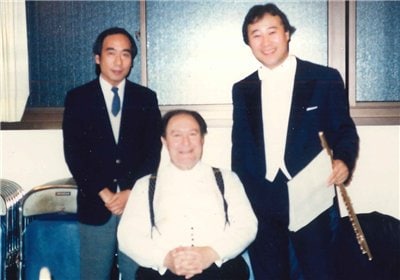
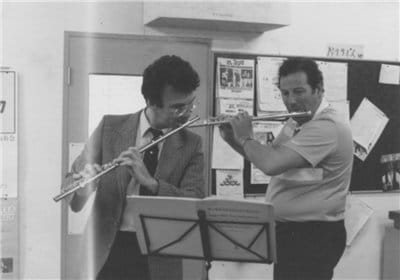
Mr. Baker, Mr. Graf, Mr. Nicolet…
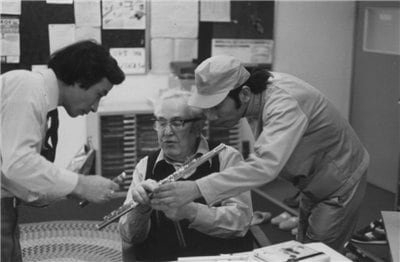
HARA – At that moment, Yamaha got attention from not only Mr. Kudo but also from many other great flutists such as Mrs. Grafenauer, Mr. Adorján, Mr. Graf, Mr, Larrieu, and Mr. Larde, so we were working on their instruments as well at the same time. In the case of Mr. Philippe Pierlot in the National Orchestra of France, when his father Mr. Pierre Pierlot who was a famous oboist came to Kusatsu to give a master class, he told us, “Please take care of my son.” and then we knew that Mr. Philippe Pierlot was playing the Yamaha flute.
My boss Mr. Kaji told me, “Please feel free to do whatever you want to try.” and drew up enough budget to travel around Europe carrying prototypes. That was such a good time. After that, we didn’t have to visit Europe as often anymore as the Atelier was established and replaced the role.
― Mr. Julius Baker was also closely associated with Yamaha, wasn’t he?
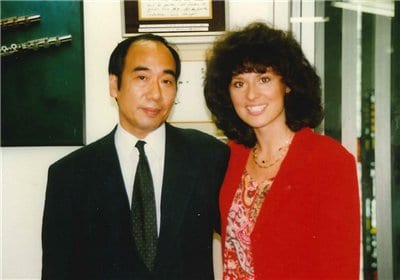
HARA – Yes, he gave lots of advice regarding head joints even before I joined Yamaha. He was an extremely strict person. For example, when he visited our factory, he picked up a flute from a student model line, and measured the internal diameter of the embouchure hole with his own gauge to make sure if it was exactly 17.35 millimeters. At that moment, some of the products had slightly different number because it was difficult to equalize the production due to several factors such as the abrasion of metal cores, and we used to be scolded by Mr. Baker. Thanks to the experience, we could improve the production management reflecting what we had learned from him. Of course he is gentle and friendly in general, but very severe regarding the production.
Mrs. Irena Grafenauer was the severest flutist in the world regarding the adjustment.
Whenever she said, “This stuck sound is caused by the leak from some pads.” we were sure to find some slight leaks. But the truth is that she purchased two flutes when she tried Yamaha for the first time. One was a type A gold flute, and the other one was a gold plated flute with gold posts as a spare instrument.
― The situation wasn’t so favorable for everyone, no?
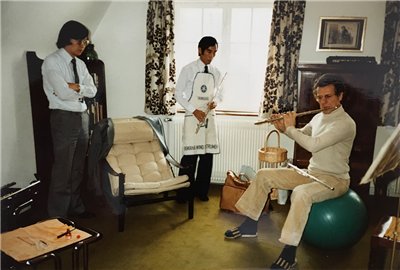
HARA – It took ten years to convince Mr. Graf. Every time I brought him a new instrument, he told me, “Not yet.” He used to say, “Japanese flutes don’t have a sense of colors. It is just like the difference between Japanese paintings only expressed by the texture of black-and-white ink and European paintings rich in colors. An instrument needs to be capable of expressing an infinite variety of colors.” Ever since then, I have tried to visit museums to admire paintings and sculptures whenever I visit Europe. The interesting thing is that I gradually became able to tell the nature of authentic art. After ten years, Mr. Graf finally played the Yamaha flute. However, I still felt that something was missing compared with his other instruments; therefore I asked him to wait one more year and promised to come back with a better one. Then he told me, “This is the first time to hear such words from a person who is engaged in manufacturing. I will fully trust you from now on.” Like Mr. Adorján, we started calling each other by first name from that day.
“Please stay as you are.”
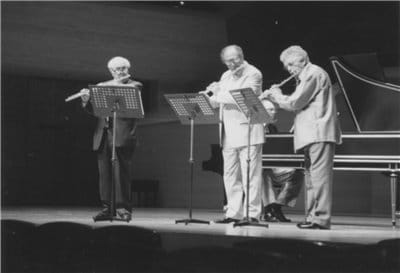
The words of Mr. Nicolet also etched deeply into my mind although the Yamaha flute couldn’t be his choice. “Many young Japanese musicians tend to imitate the music of past legendary musicians. Their performances don’t communicate how they interpret the music or what they are willing to express. They should act more freely without restraint while they are still young. Similarly, the same thing can be said regarding not only Japanese musicians but also Japanese instruments. Japanese instruments are still trapped in the standard of those precedents. Although the power has been improved, the range of expression is still narrow because they are targeting too much security.” However, Mr. Nicolet highly evaluated the Yamaha student model flute, and he, in fact, placed a considerable number of orders repeatedly. Mr. Galway also said that the Yamaha student model flute was the best in the world and promoted it in Australia and in the U.K. Mr. Nicolet asked us, “Please stay as you are. A globally influential manufacturer like Yamaha shouldn’t offer an easy-to-play flute, for example with a highly raised embouchure hole. If a student begins with such an instrument, he will face many difficulties when he upgrades his instrument.” That’s exactly what Mr. Rampal told me too. Not only them but all French-style flutists I had met including Mr. Larrieu, Mr. Larde, and of course Mr. Kudo told me the same thing.
― You received many opinions from different types of flutists. How did you organize those ideas?
HARA – There were many things in common, and it was our business to decide how to make use of them. Certainly we needed to stick to our will. In that sense, there was always “the Louis Lot model” in my mind. A French-style flute like Louis Lot. We targeted the French-style while many other manufacturers were stuck on a German-style flute.
― OK, we will ask you more about that in the next session with Mr. Keisuke Tanaka.
*This article is originally published in a Japanese monthly magazine "PIPERS" from October to December 2016 and includes contents at the time of the interview.
Yoshiyasu Hara
After graduating Tokyo Collage of Music, he joined Yamaha in 1971. Through his career in flute and piccolo development, he has gained trust from prominent flutists in Europe and America. He has been engaged in flute development as an advisor even after retiring from Yamaha in 2003. Organizer of "HARA flute workshop". Lecturer in Daikanyama Technical Academy.

